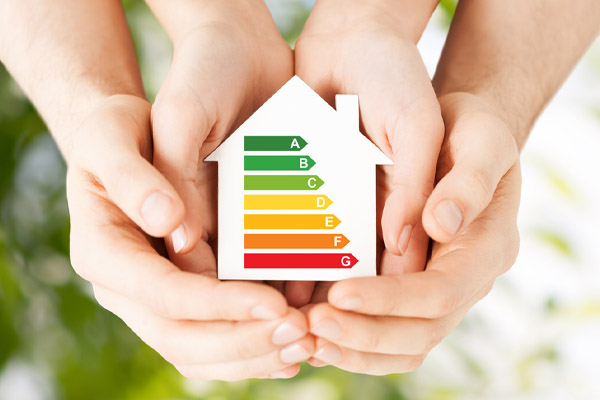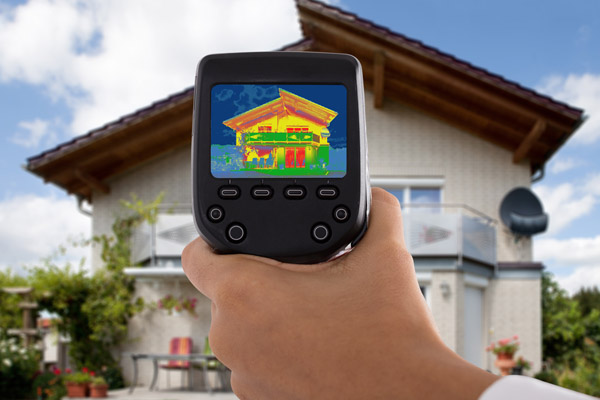What Is Thermal Bridging In Colorado Homes?

Every homeowner wants an efficient and comfortable home. They can make massive improvements on these fronts by addressing weaknesses in the structure. For example, each section of the house has distinct materials and configurations. The non-uniform thermal envelope results in variations in heat flow. Some spots allow indoor heat to escape faster in the winter. If they can identify these thermal bridges, they can employ solutions to minimize their impact. Insulation experts can provide dependable assistance for this project.
What Is A Thermal Bridging In Fort Collins?
Contents
Heat always flows from a hot area to a cold area in a bid to achieve equilibrium. This natural tendency is a problem when you are trying to keep a house warm during the colder months. It is a constant struggle to maintain the temperature contrast. Furnaces keep generating heat, and insulation retains it as much as possible. However, the barrier is imperfect. Conductive materials along the envelope serve as a thermal bridge between the interior and the exterior, allowing indoor heat to move outside.
There are two ways to deal with this problem. The first is to prevent the thermal bridges from forming through intelligent design. Architects must be mindful of the phenomenon when creating a house plan and selecting materials. Builders should also employ construction techniques that reduce the effect of thermal bridges. The second strategy is to renovate an old house and make lasting changes to improve the situation. Professionals can inspect the structure and offer suitable recommendations.
Related Article: What Are The Pros And Cons Of Spray Foam Insulation?
Why Fort Collins Homeowners Should Be Aware Of Thermal Bridging

People spend most of their days inside their homes. Astute owners learn everything they can to create a pleasant space. Thermal bridging is not the first thing that comes to mind when it comes to home comfort, but those who become aware of it quickly realize its importance. Letting it persist results in the following issues:
- Higher Energy Bills: Thermal bridges help heat escape faster, causing the indoor temperature to plunge. They constantly undo the work of the heating system. Their presence forces furnaces and boilers to catch up with the loss, effectively increasing fuel consumption. Homeowners spend more on their energy bills because of these flaws. If they can break the bridges, heat will have nowhere to go. It will continue to circulate indoors for the comfort of the occupants. Stable indoor temperature reduces the burden on heating systems. These will consume less fuel for lower energy expenses.
- Risk of Condensation: Thermal bridging has a hidden danger. It may increase the risk of condensation along the walls and induce rot from within. The damage builds up over a long period, with owners unaware until it reaches advanced stages of decay. It can weaken the structure and lead to dangerous situations. The moisture also creates an environment conducive to mold growth. It can release spores that negatively impact indoor air quality. People may experience respiratory problems after prolonged exposure.
- Vulnerability to External Conditions: Neglecting thermal bridges leads to a reduction in the effectiveness of home insulation. Only the insulated surfaces block heat flow, while the rest of the thermal envelope allows uninterrupted movement. It makes homes vulnerable to the influence of external conditions. Interiors feel unbearably cold during winter and hot during summer. If you have an airtight and insulated home that continues to experience large temperature swings, you may want to search for thermal bridges.
Related Article: How Does Insulation Affect Heat Loss?
Where Thermal Bridges Are Typically Located In Colorado Homes

Bridging frequently occurs in spots where objects penetrate the building envelope. For example, you can find them in the joints between the walls and the floor. They could also be along the intersections of the walls and roof. Builders often bore holes for pipes and cables to pass through. Masons use steel wall ties during the construction of cavity walls.
Some thermal bridges repeat across the structure, such as wood studs surrounded by fiberglass insulation in the cavities. They are responsible for significant heat loss, so designers should account for them when planning the house. Other bridges are non-repeating, such as windows, doors, loft hatches, and comparable openings. The geometry of the building also creates thermal bridges, including corners of external walls. Reducing design complexity can minimize their occurrence.
Related Article: How Is R Value Calculated?
What an Fort Collins Insulation Contractor Can Do to Help
Heat loss is unavoidable, but it is manageable. Proper planning can bring the thermal bridge coefficient under 0.01, which means its effects are negligible. The best time to think about this is before house construction starts. Designers can remove or replace conductive materials as necessary. However, it is never too late. You can still do something to remedy flaws in an existing home.
Consult an insulation contractor about retrofitting options. They can help you break the thermal bridge by covering studs with continuous insulation. Adding interior insulation is expensive because it requires replacements for the drywall, trim, and finishes. Many choose the cheaper route: installing outdoor insulation under new siding. This strategy leaves the interiors undisturbed while providing the exterior with a makeover.
Different types of rigid insulation are available for this application: expanded, extruded, and graphite polystyrene. They are commonly known as EPS, XPS, and GPS. The materials have varying R-values, features, and benefits. XPS has the highest R-value per inch at 5.0, but it is also the most expensive of the bunch. If you are looking for other possibilities, consider installing insulated vinyl siding. This product can block heat flow while enhancing the appearance and longevity of the exterior.
Related Article: How Better Attic Insulation Improves Indoor Air Quality In Colorado
Conclusion
Sidewalls account for almost 35% of total energy loss. Breaking the thermal bridges through insulation can drastically reduce bleeding. Seek a practical solution with the help of a capable insulation contractor. Discuss your options to learn the pros and cons. Experienced installers will ensure proper execution for lasting relief.
Related Article: Do I Need to Remove Old Insulation Before Installing New Spray Foam in Colorado?
Avoid Thermal Bridging In Fort, Collins Colorado
When it concerns air sealing or upgrading your home’s insulation, consulting with a professional is the best option. However, not all will offer the same quality of service and pricing. Always work with the best one in your area. Residents of Fort Collins, Colorado, and the neighboring area can call Ascend Construction for superior service.
Ascend Construction specializes in insulation removal and installation, air sealing, energy conservation, energy audits, whole-house fan installations, and much more! You can count on us to provide you with service that outshines the rest!

Contact Ascend Construction for a free consultation today. We can provide you with practical solutions to address the problem areas in your Fort Collins home. All of our services are affordable, and our work is guaranteed. Click here to contact us, or click the button below to give Ascend Construction a call. We offer free, no-obligation, in-home consultations.
Ascend Construction
301 S Howes St #1241
Fort Collins, CO, 80521